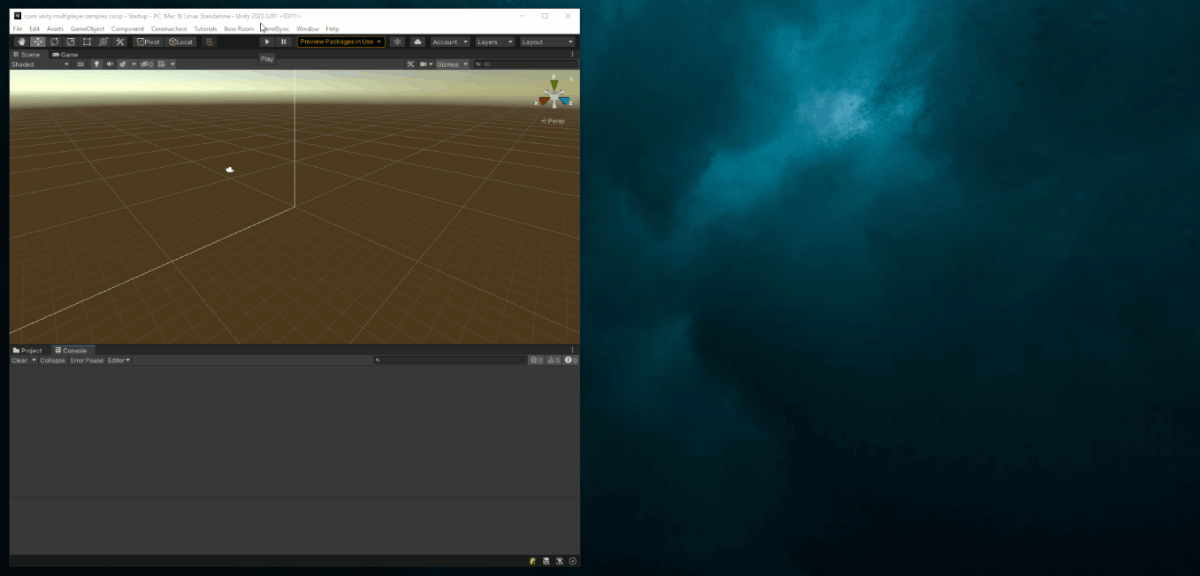Testing multiplayer games locally
Testing a multiplayer game presents unique challenges:
- You need to run multiple instances of the game to test multiplayer scenarios.
- You also need to iterate quickly on custom code and asset changes and validate work in a multiplayer scenario.
- You need to be able to debug work in a multiplayer scenario using editor tools.
Currently, Unity does not offer any workflow that covers all of these requirements. (See our roadmap here)
There will always be a need to validate work in the target distribution format (that is, on platform) and the way to do it's by creating Player Builds.
Player builds don't meet the quick iteration and easy debuggability using editor tools requirement. As such the current recommended workflow for local iteration is ParrelSync.
Player Builds
This approach is great when we need to verify work on the target platform or with a wider group of testers.
First step is to build an executable.
- Navigate to
File->Build Settingsin the menu bar. - Click
Build.
Then the build can be shared among the testers.
Local iteration using Player Builds
Once the build has completed you can launch several instances of the built executable to both host and join a game.
It is also possible to run the builds along with an editor that produced said build, which can be useful during iterations.
Mac users: to run multiple instances of the same app, you need to use the command line.
Run open -n YourAppName.app
Though functional, we find this approach to be somewhat slow for the purposes of local iteration. Head on to the ParrelSync section for our suggested workflow for local iteration.
ParrelSync

ParrelSync is an open-source Unity Editor extension that allows users to test multiplayer gameplay without building the project by having another Unity Editor window opened and mirror the changes from the original project.
ParrelSync works by making a copy of the original project folder and creating symbolic links to the Asset and Project Settings folders back from the original project.
We use ParrelSync for local iteration in Boss Room sample.
ParrelSync relies on symbolic links and partial copies of the original project folder structure - generally it's completely safe.
To ensure that no bug in any of the software you use can destroy your work - it's recommended that you consistently backup your project or use a version control system. Some common examples are:
Installation
Follow the installation instructions on ParrelSync repo page
Usage
- Navigate to
ParrelSync->Preferencesin the menu bar to open the preferences window. - Ensure that both Options are selected as shown below
By default ParrelSync prevents asset serialization in all clone instances and changes can only be made from the original project editor. This is a very important setting that prevents issues with multiple editors accessing the same Library folder (which isn't supported and breaks basic assumptions in Unity design).
- Open the
ParrelSync->Clones Managerfrom which you can launch, create and remove clone editors.- Advanced usage is to utilize ParrelSync's capability of passing Arguments to clones, thus allowing to run custom logic on a per-clone basis.
Known issues and workarounds
- An important nuance is that ParrelSync does not sync changes made to packages.
Packagesfolder is synced on clone opening, so if you made package changes - you should close and re-open your clones. - If you encounter a Netcode error that mentions
soft sync- that generally means that prefabs or scenes aren't in sync between editors. You should save the project in the main editor viaFile->Save Projectand refresh the projects in the clone editors by pressingCtrl + R(which is by default done automatically) or reimport networked prefabs in the main editor. - More information and general ParrelSync FAQ: https://github.com/VeriorPies/ParrelSync/wiki/Troubleshooting-&-FAQs
- The ultimate workaround in case nothing helps - deleting and re-creating the clone instance via
ParrelSync->Clones Managerwindow.
General tips
- Bigger screens or multi-screen setups allow for more screen real estate, which is handy when one has to have multiple instances of an app opened at the same time.
- ParrelSync has to copy and update separate
PackagesandLibraryfolders for every clone, and in certain cases a fix for misbehaving clone is re-creation - a good SSD makes this process quite a bit faster. - Creating a fork of any git repository that your project relies upon in production can help avoid bad surprises if the repo gets taken down or introduces an undesirable change. You should fork ParrelSync before using it in your live project.
This guide would not have been possible without the hard work and support of Philipp Deschain, Unity.